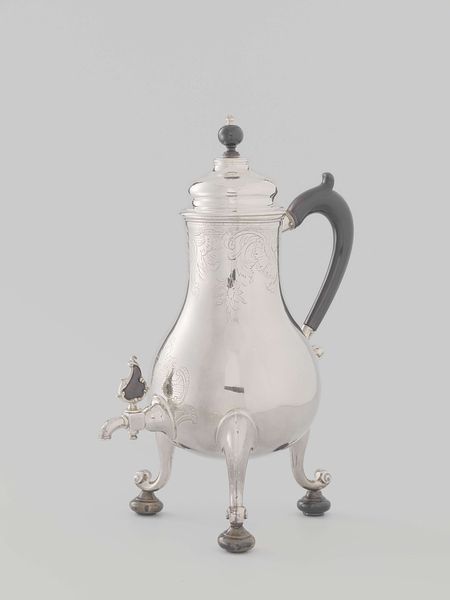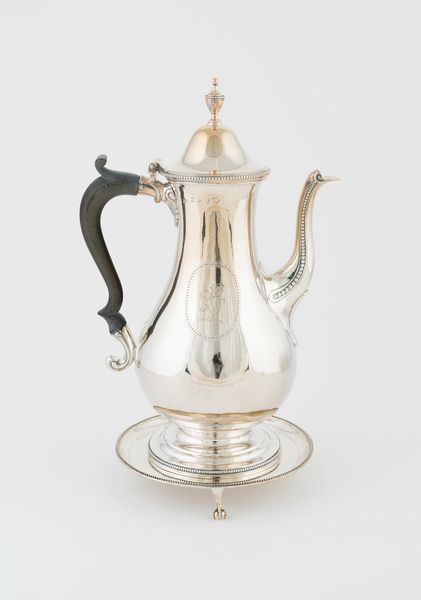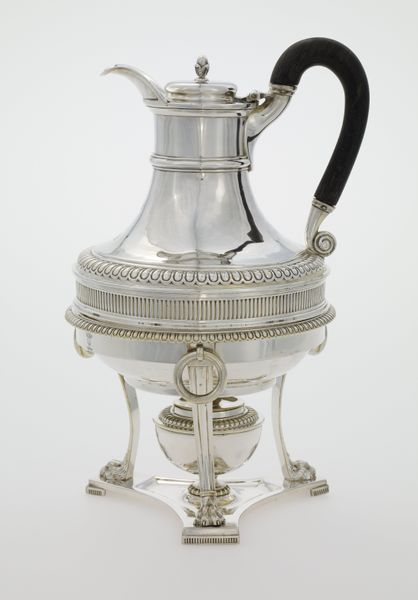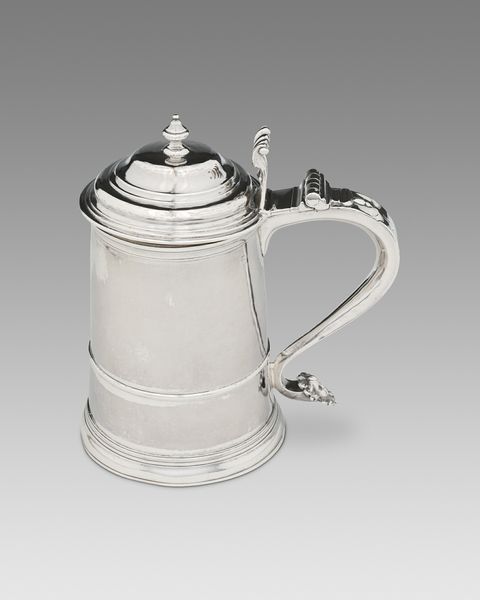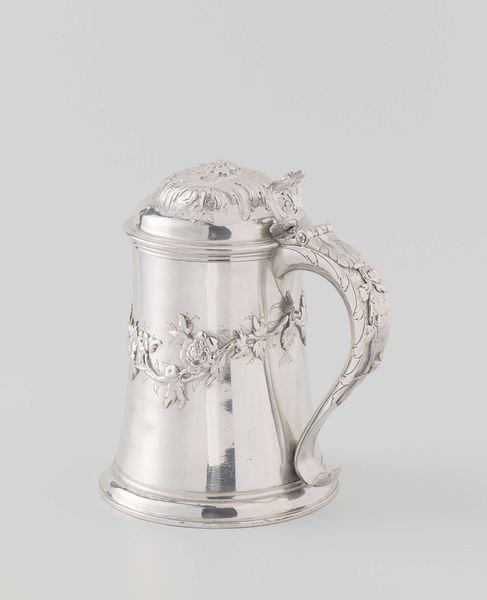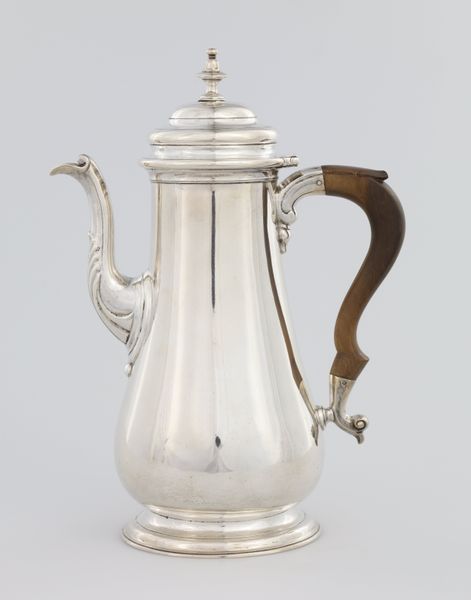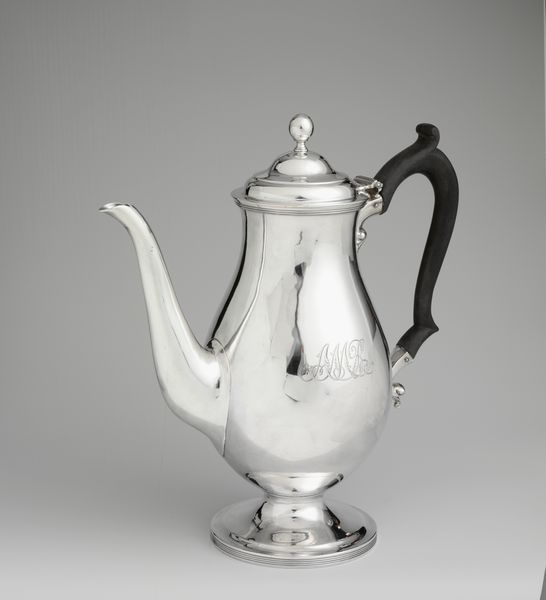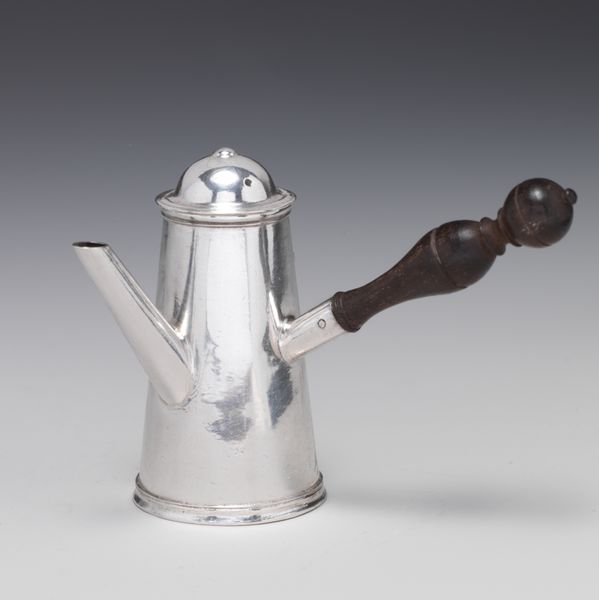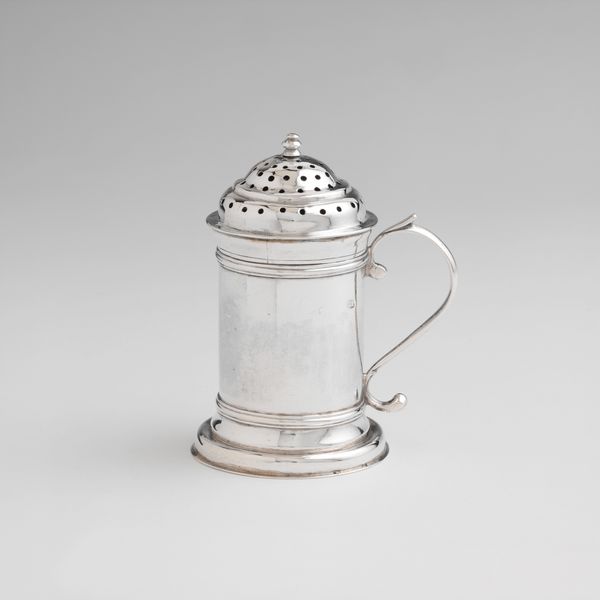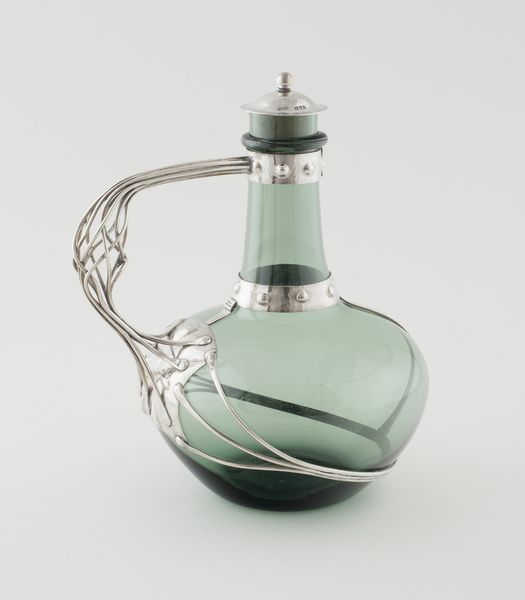
metal, ceramic
#
art-nouveau
#
metal
#
ceramic
#
stoneware
#
ceramic
#
decorative-art
Dimensions: height 21.2 cm, width 206 cm, depth 127 cm, diameter 11 cm
Copyright: Rijks Museum: Open Domain
Editor: Here we have Ernest Cardeilhac’s "Chocolate pot with a molinet", created around 1900. It is fashioned from metal and stoneware ceramics. The stylized floral details and slender handle are quite striking. What’s your take on this decorative piece? Curator: It is exemplary of the Art Nouveau movement, and it tells us a lot about the societal values of the time. Consider its function: a chocolate pot, an object for the privileged. What does it suggest about who art was *for* in 1900? Editor: Well, certainly not for the working class. It’s hard to imagine this pot in a humble kitchen! So, Art Nouveau wasn't just about aesthetics but about class too? Curator: Precisely! And consider the materials—silver and ceramic, carefully wrought. The artistry here elevates the mundane act of drinking chocolate into a ritual of wealth. What do you notice about the floral motifs? Editor: They seem like stylized tulips or lilies. They seem to almost grow out of the form of the pot itself. Were these particular flowers significant then? Curator: Yes! Flowers were potent symbols. They represented renewal and beauty, ideas that resonated deeply in a period of rapid industrialization and social change. This pot offered an escape, a return to the natural world, however idealized. Editor: I see, so it's less about pure artistry, and more about social commentary through functional objects? Curator: It’s a blend! Cardeilhac wasn’t simply making a pot; he was crafting an object that communicated specific cultural ideals about luxury, nature, and status. Museums and galleries were complicit in reinforcing those ideals through their acquisitions and displays. How does this perspective change your view of the object? Editor: I thought it was just a pretty pot. I understand now that this seemingly innocuous object is steeped in the social and political context of its time.
Comments
rijksmuseum about 2 years ago
⋮
The firm of Ernest Cardeilhac produced an accessible form of Art Nouveau silver. The designs are characterized by a combination of motifs based on nature in a repetitive pattern, in this case stylized thistles. The molinet (stirring rod) was used to stir and make the cocoa frothy.
Join the conversation
Join millions of artists and users on Artera today and experience the ultimate creative platform.

